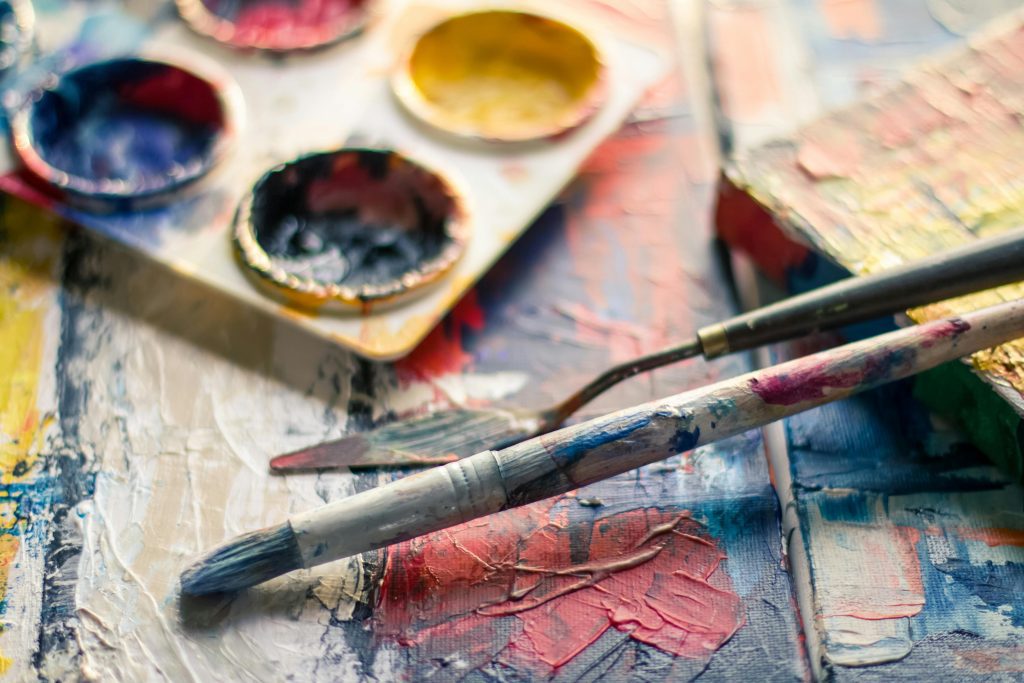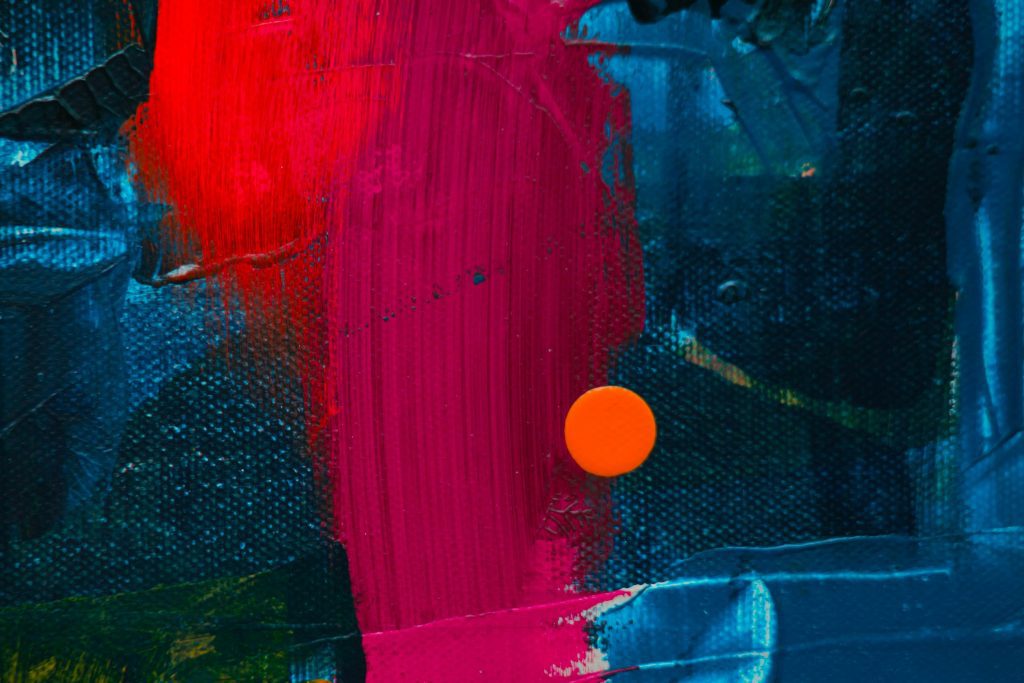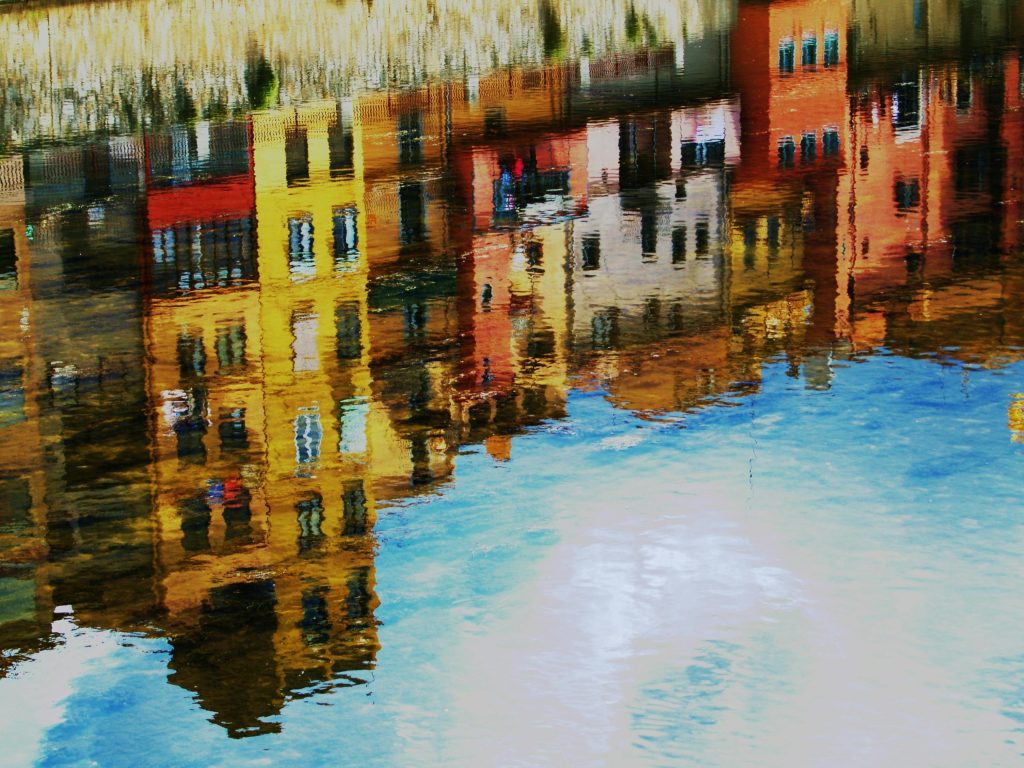Portfolio Tips: What About Works in Progress?

1. Let’s Start with the Big Question: What Counts as a Work in Progress?
A work in progress (WIP) isn’t just something unfinished, it’s a piece that’s still unfolding. It may have a strong concept, visible momentum, and compelling marks of experimentation, even if it’s not yet framed or gallery-ready. Many artists keep these tucked away, thinking they’re too raw for the spotlight.
But what if that very rawness is what makes them powerful? There’s beauty in the becoming, not just the completed. And sometimes, that glimpse into your process is what curators, collectors, and collaborators connect with most deeply.
A WIP can also signal that you’re engaged, that your practice is alive and evolving. When someone sees your work mid-development, they’re not just witnessing a piece, they’re witnessing you in motion.
So before we decide if a WIP belongs in your portfolio, let’s acknowledge its value. It’s not a filler. It’s not a flaw. It might just be the most human part of your creative story.
And that deserves a second look.
2. Why Showing the “Messy Middle” Builds Trust
Real Talk: everyone loves the polished final product. But there’s something magical about showing the middle, the vulnerable, imperfect, honest parts of your process. When you include a WIP, you’re inviting someone into your creative kitchen, not just serving them the plated meal.
It helps people see how you think. How you experiment. How you make decisions. And that transparency can build deep trust, especially with curators or clients who value authenticity and creative agility.
If you’re applying for a residency, grant, or collaboration, showing your process might work in your favor. It tells them, “I’m not static. I’m curious, committed, and willing to explore.”
Sometimes a WIP offers context that makes your finished pieces feel more layered. It’s like seeing the sketchbook behind the masterpiece, it doesn’t take away from the final, it deepens it.
Your messy middle might just be the part they remember most.
3. Portfolio vs. Playground: Know the Difference
Not every work in progress belongs in your formal portfolio. Some are meant for your personal playground, where you get to try, fail, and learn in private. But others? They might actually hold up just fine under the portfolio spotlight.
The key is intention. Ask yourself: is this piece saying something meaningful? Does it add value or clarity to your body of work? If yes, it might just earn a spot next to your completed pieces.
Think of your portfolio as a curated experience, not a storage folder. You’re telling a story, and sometimes, the draft is part of that story. Especially if it shows growth, risk-taking, or direction.
One idea is to create a separate section in your digital portfolio labeled “In Progress” or “Current Explorations.” That way, viewers know what to expect, and you still maintain control of the narrative.
It’s not about oversharing, it’s about smart, intentional inclusion.

4. When It’s a Definite No
Now, let’s flip the coin: not all WIPs should make the cut. Some are too early, too chaotic, or too confusing to serve you well. If the piece doesn’t clearly communicate anything yet, it might need more time to simmer before you share it.
Avoid including works that feel more like experiments than explorations. If it’s something you’re unsure about stylistically, or if it clashes with the overall voice of your portfolio, hold it back.
Also, steer clear of anything that might cause distraction or doubt. If the piece raises more questions than it answers, that’s a sign to leave it out, at least for now.
It’s okay to wait. Including unfinished work doesn’t mean showing everything. It means choosing with care and confidence.
Think of your WIPs as wildflowers. Not every bloom belongs in the bouquet.
5. Use WIPs to Show Creative Direction
Even if your work isn’t “finished,” it might still reveal where you’re heading. And that can be incredibly valuable for collaborators, funders, or curators who are investing in your future work, not just what you’ve done already.
Say you’re shifting mediums or trying a new theme. Including WIPs can illustrate your current momentum and creative inquiry. It says, “Here’s what I’m exploring next.” That kind of openness can make your portfolio feel dynamic and forward-looking.
Use captions wisely. Let the viewer know it’s a WIP, and briefly explain its purpose or what you’re exploring within it. This kind of context turns a raw piece into a thoughtful, intentional inclusion.
You’re not just saying, “Look at this.” You’re saying, “Come along with me as I build this.”
That’s a very compelling invitation.
6. Sharing Process Can Attract the Right People
Including works in progress doesn’t mean you’re revealing messy secrets. Instead, you’re showcasing how intentional and thoughtful your creative process really is. Think about it, when you show the stages your work goes through, you’re offering insight into your craftsmanship. That kind of openness isn’t weakness, it’s professionalism in disguise.
Collectors, curators, and even potential collaborators often appreciate seeing how something came to be. It tells them you’re not rushing through things, but instead taking the time to let your work evolve. It’s like watching a behind-the-scenes featurette of a movie, it builds appreciation for the final product. You’re essentially inviting people to appreciate the journey, not just the destination.
It also shows consistency. When someone sees several pieces developing in the same thematic or stylistic direction, it signals that you’re not just creating on a whim, you’re building a voice. That’s incredibly reassuring to professionals reviewing your work. They want to see that you have direction, even if not everything is yet finished.
Imagine presenting a polished piece right next to its sketch, notes, or material tests. You’ve just created a story, and everyone loves a story. It gives people a reason to slow down and spend more time with your portfolio, which is the dream, isn’t it? Capturing interest and keeping eyes lingering just a little longer?
So if you’re nervous about including a WIP, think of it like showing a neatly curated progress board. Choose stages that highlight your thoughtfulness, your technique, and your unique voice. That’s not unprofessional, it’s storytelling.
7. Presentation Is Everything
If you decide to include WIPs, how you present them matters. A cropped, well-lit photo of your sketchbook or studio wall can be more effective than uploading a blurry phone snapshot of an unfinished canvas. Think of it as storytelling, you’re letting people peek behind the curtain, not dumping the entire backstage mess.
You can even add short captions to offer context: what were you exploring in this piece? What changed from the beginning to where it is now? This turns your WIP from something incomplete into something intentional. It becomes a part of your narrative.
If you’re using a digital portfolio, consider creating a “Process” section where you group WIPs separately. That way, they’re not competing with your polished pieces, but still available for those who want to explore. It also signals to reviewers that you know how to curate and contextualize your work.
For physical portfolios or applications, WIPs can be a risky addition, but not if they’re framed well. Use clean photos, pair them with more refined work, and consider writing a short explanation to show how that WIP led to the final piece.
Remember: works in progress aren’t about showing chaos. They’re about showing thinking. Make sure what you share feels like a window into your creativity, not an unfinished room still under renovation.
8. When to Share, and When to Keep It to Yourself
Not every work in progress needs to go public. Some pieces are meant just for you, for now, or maybe forever. And that’s completely okay. Sharing your process is powerful, but so is protecting parts of it while they’re still taking shape. Your portfolio doesn’t have to be a confessional booth. It can also be a sanctuary.
Ask yourself: what’s the purpose of including this WIP? Is it to showcase your technique, your experimentation, or your vision? Or are you sharing it because you feel pressure to look busy or fill space? There’s a difference between being transparent and being prematurely exposed.
It’s important to preserve your sense of safety as an artist. If you’re still too emotionally connected to a piece, or unsure where it’s going, you don’t owe it a spot in your portfolio just yet. Give it time. Let it marinate. You can always add it later.
Think of your portfolio as a curated conversation with your audience. What are you trying to say with the work you include? If the WIP adds something fresh or essential to that conversation, bring it in. But if it’s still a whisper you’re figuring out, it’s okay to keep it to yourself until the message feels clear.
Trust your instincts. You don’t have to put everything on display to prove you’re working. Sometimes, holding something back is the most generous thing you can do, for yourself and your art.

9. How to Talk About WIPs with Confidence
There’s something quietly powerful about showing evolution. Works in progress can act as visual timestamps that document your growth over time. When you include a few strategically placed WIPs in your portfolio, they can serve as markers, proof of your exploration, experimentation, and ability to stretch creatively.
For example, if you’ve started incorporating textiles into your paintings, showing a piece that blends both mediums mid-way through can be a beautiful way to introduce your audience to your current direction. It’s like saying, “Here’s where I’m headed, come along for the ride.” It invites engagement, curiosity, and connection.
Sometimes, showing how your ideas develop across stages helps communicate your vision more clearly than a single finished piece can. That early charcoal sketch, the color tests, the revised composition, each element adds depth to the story you’re telling. It creates texture in your portfolio, literally and metaphorically.
Of course, curation still matters. The goal is to support the story, not dilute it. If a WIP looks disjointed or out of place with the rest of your portfolio, it might confuse your viewer rather than captivate them. Trust your gut here. If something feels off, it probably is.
But when done intentionally, progress pieces remind people that art is not static. It lives and breathes, shifts and stretches. And so do you. That’s something worth sharing.
It’s Okay to Be Seen Mid-Sentence
Art is rarely a clean beginning and ending, it’s usually a collection of overlapping stories, ideas, and revisions. So why expect your portfolio to be any different?
Including works in progress can feel vulnerable. But it can also be freeing. It allows people to meet you where you are, not just where you’ve been.
Be selective. Be thoughtful. But don’t be afraid to share your becoming. You’re not less of an artist because something isn’t finished. You’re more of one because you’re still creating.
The truth is, we’re all works in progress too.
And that might just be the most powerful portfolio statement of all.
